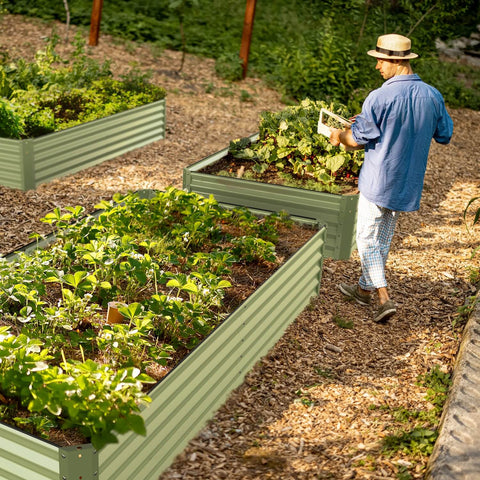The garden bed is an important element in the design of the garden, not only providing space to grow flowers and vegetables but also adding beauty to the garden. This article will show you how to choose the right garden bed to meet your planting needs and harmonize with the overall style of the garden.The following content also has some reference value for raised garden beds.
Before choosing a garden bed, it is important to determine your space needs. Consider the type and number of plants you plan to plant, as well as the size and shape of the garden. This will help determine the desired garden bed size and layout.
The material and durability of

a garden bed is one of the important factors in the selection. Common garden bed materials include wood, plastic, metal and stone. Wood is usually the most common choice, but requires regular maintenance to prevent decay. Plastic beds can resist corrosion, but may not be strong enough. Metal beds are sturdy and durable, but can overheat in the sun. Stone beds have an elegant appearance, but cost more. According to your preferences and budget, choose the right materials.
The height of your garden bed is important for both planting and maintenance. Taller beds provide better drainage and ventilation, and reduce the stress of bending over. Lower beds are better for smaller plants and ground cover. Choose the right bed height according to your physical condition and planting needs.
Consider Drainage Good drainage is essential for the health of garden beds and for plant growth. Make sure there are adequate drainage holes or drainage systems at the bottom of the bed to prevent water retention and root rot. There are several different types of drainage systems to choose from. The most common are underground drainage systems that use gutters, drainage pipes, and drainage plates to direct water flow. This system effectively directs water out of the garden bed, keeping the soil moderately moist. Another option is a surface drainage system, such as laying drains or pipes over the surface of the garden bed to collect and drain excess water. When designing and installing a garden bed drainage system, it is a good idea to consult a professional, such as a horticulturist or soil engineer, to ensure that the system you choose matches the specific needs of your garden bed and can provide good drainage

Consider your budget and sustainability when choosing a garden bed. Certain materials may be more expensive, but with longer life and better durability, may be more affordable in the long run. In addition, choose beds made from renewable or recycled materials to reduce the environmental impact.
Finally, choose a garden bed that harmonizes with the overall style of the garden. Consider the bed's color, shape and design so that it complements other elements in the garden. If your garden has a specific theme or style, choose a bed to match to create a uniform look.
Choosing the right garden bed involves considering a number of factors, including space requirements, materials and durability, bed height, drainage, budget and sustainability, and harmony with the garden style. Taking these factors together, you will be able to choose the ideal garden bed that is most suitable for your garden, providing an elegant and practical space for your planting activities.









